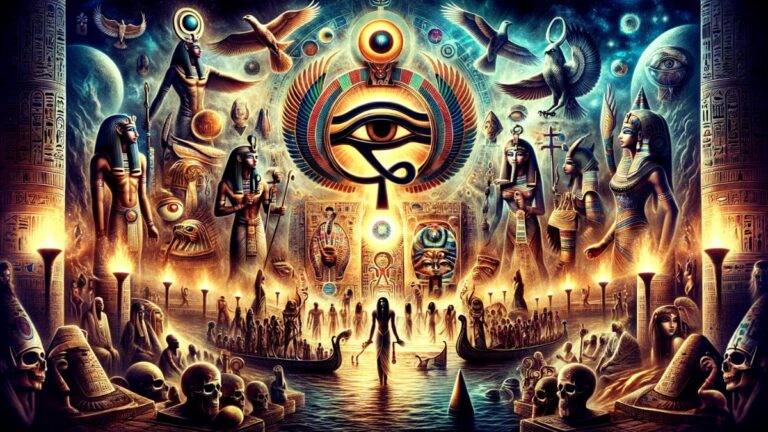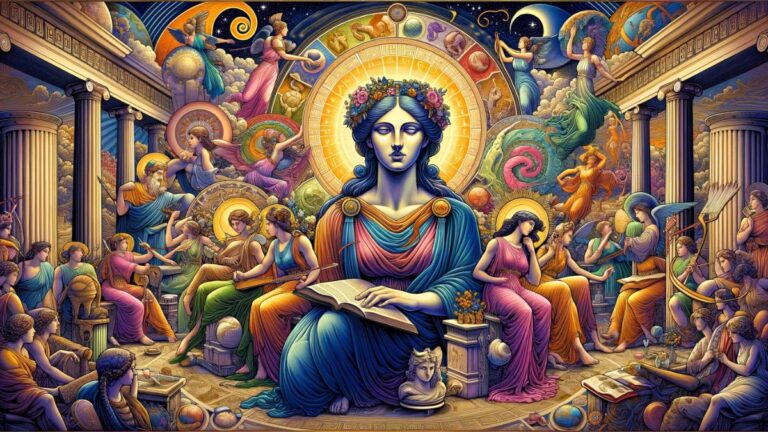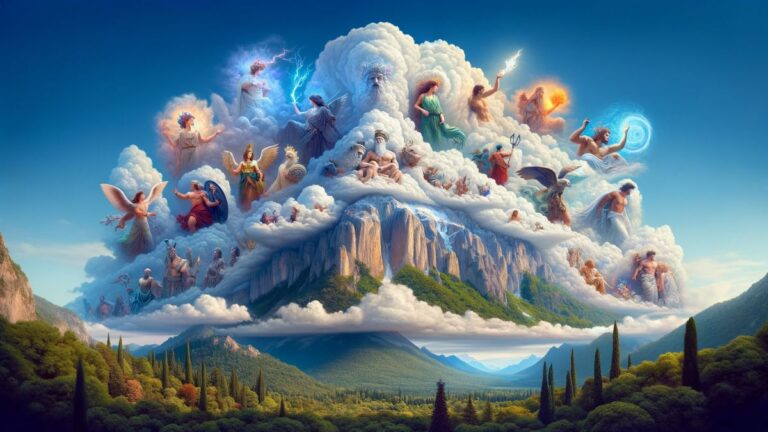The Twelve Labors of Hercules: Myth and Meaning

Hercules, a name that echoes through the ages, represents more than just strength; he symbolizes the enduring human spirit overcoming trials. His legendary Twelve Labors are not just stories of heroic feats, but also reflections of our own life challenges. This article delves into these ancient tales, unraveling the layers of myth and extracting the timeless meanings they hold. We will explore how each labor, from the Nemean Lion to the capture of Cerberus, offers insights into human nature and life’s struggles.
The Nemean Lion: Facing Our Fears
Hercules’ first labor was to slay the Nemean Lion, a beast known for its impenetrable skin. This task symbolizes the daunting challenge of confronting our deepest fears. Just as Hercules had to find a way to overcome the lion’s invincibility, we too must discover our own unique strategies to face our fears. This story teaches that fear, while formidable, is not insurmountable. It’s a reminder that sometimes, we must engage directly with our fears to overcome them, much like Hercules did when he wrestled the lion, turning his own strength against it.
The victory over the Nemean Lion is also a lesson in adaptability and resilience. Hercules learned that traditional weapons were ineffective, prompting him to use his wit and physical prowess. This mirrors our own experiences where conventional approaches might not work, and we must think creatively to find solutions. The labor underscores the idea that facing fears is not just about brute force but also about using our intellect and inner resources. It’s a powerful metaphor for personal growth and the triumph of courage over fear.
The Lernaean Hydra: The Battle Against Overwhelming Odds
In his second labor, Hercules faced the Lernaean Hydra, a serpent with multiple heads that regrew when cut off. This labor represents the struggle against overwhelming odds and persistent problems. Every time Hercules chopped off one head, two more would spring up, symbolizing how some challenges in life can seem endless and ever-increasing. This story teaches us about perseverance and the need for strategic thinking when faced with complex issues.
Hercules’ victory over the Hydra required more than just strength; it required cleverness and help from his nephew, Iolaus. This emphasizes the importance of seeking help and collaboration in overcoming daunting tasks. Just as Iolaus helped Hercules by searing the necks to prevent the heads from regrowing, we too can find innovative solutions and support in others to tackle our most persistent problems. The Hydra’s defeat teaches us that no challenge is too great when we combine our efforts and think outside the box.
The Ceryneian Hind: The Pursuit of the Seemingly Unattainable
Hercules’ third labor was to capture the Ceryneian Hind, a swift and elusive deer sacred to the goddess Artemis. This task symbolizes the pursuit of goals that seem unattainable. Hercules had to chase the hind for a year, demonstrating incredible patience and persistence. This mirrors our own pursuits in life, where some goals require long-term commitment and relentless effort. The labor teaches us that the pursuit itself is as important as the achievement, emphasizing the value of persistence and endurance.
Capturing the hind without harming it also highlights the importance of respect and reverence in our pursuits. Hercules had to balance his duty to complete his labor with the need to honor the sacred nature of the hind. This teaches us about ethical considerations in our own quests. We are reminded that achieving our goals is important, but not at the expense of our values or respect for others. The Ceryneian Hind teaches us about the harmony between determination and moral responsibility in achieving our goals.
The Erymanthian Boar: Confronting Uncontrolled Power
The fourth labor of Hercules was to capture the Erymanthian Boar, a massive creature known for its destructive power. This labor represents the challenge of confronting and controlling unbridled power, whether it be external forces or our own unchecked emotions. Hercules’ strategy to drive the boar into the snow, slowing it down, symbolizes the need to use intelligence and strategy to manage powerful forces. This story illustrates that raw power can be overwhelming, but with thoughtfulness and planning, it can be managed and harnessed.
Hercules’ success in this labor also speaks to the theme of balance. Just as he had to find the right approach to subdue the boar without harming it, we too face the task of finding balance in our lives. Whether it’s managing our emotions, handling power at work, or dealing with challenging situations, the key lies in not allowing these forces to run wild. The Erymanthian Boar teaches us about the importance of control, strategy, and the balance of power in our lives.
The Augean Stables: Cleansing and Renewal
Hercules’ fifth labor, cleaning the Augean Stables, symbolizes the idea of cleansing and renewal. Tasked with clearing a lifetime’s worth of filth in a single day, this labor was about tackling a seemingly impossible task and finding innovative ways to achieve it. Hercules’ solution to divert a river to wash out the stables illustrates the power of creative thinking in overcoming even the most daunting tasks. This story is a metaphor for the cleansing of our own lives, whether it be physical, emotional, or spiritual clutter.
The labor also highlights the theme of rejuvenation. Just as the cleansing of the stables brought new life to the land, our own efforts to clear out the old can pave the way for new beginnings. This task teaches us about the importance of not just cleaning up but also rejuvenating our surroundings and ourselves. It’s a reminder that sometimes, the most mundane tasks can lead to the most profound transformations, and that renewal often follows a thorough cleansing.
The Stymphalian Birds: Tackling Hidden Dangers
In his sixth labor, Hercules was challenged to drive away the Stymphalian Birds, creatures that were a menace to the countryside. This labor represents the idea of tackling hidden dangers or problems that lurk beneath the surface. Just as Hercules used noise to flush the birds out of their hiding and then deal with them, we too must often bring hidden issues to light before we can address them. This story teaches us about the importance of confronting problems that are not immediately visible but are nonetheless harmful.
The method Hercules used to drive the birds away also speaks to the theme of ingenuity. He had to devise a new way to deal with a unique problem, showing that sometimes conventional methods are not enough. This mirrors our own experiences where innovative thinking is required to solve complex issues. The Stymphalian Birds teach us that uncovering and addressing hidden dangers often requires creativity and a willingness to try new approaches.
The Cretan Bull: Taming Our Inner Beasts
Hercules’ seventh labor was to capture the Cretan Bull, a symbol of uncontrolled strength and fury. This task represents the challenge of taming our inner beasts, such as anger, pride, or jealousy. Hercules’ ability to subdue the bull without killing it is a powerful metaphor for mastering our own emotions and impulses. This story teaches us about the importance of self-control and the strength that comes from being able to manage our inner turmoil.
The Cretan Bull also symbolizes the struggle with external challenges that can provoke our inner beasts. Just as Hercules had to confront the bull in its own territory, we often have to face situations that test our patience and composure. This labor teaches us about the value of calmness and restraint in the face of provocation. The capture of the Cretan Bull is a reminder that true strength lies not in dominance or aggression, but in the ability to maintain our composure and control our reactions.
The Mares of Diomedes: Conquering Destructive Passions
The eighth labor of Hercules was to capture the Mares of Diomedes, man-eating horses that symbolize destructive passions and appetites. This task is about confronting and controlling our destructive tendencies, whether they manifest as harmful habits, addictions, or negative behaviors. Hercules’ struggle to tame these wild beasts reflects our own battles to rein in the parts of ourselves that can cause harm if left unchecked. This story is a lesson in the importance of recognizing and managing our destructive impulses.
The subduing of the Mares also represents the triumph over external influences that feed our negative behaviors. Just as Hercules had to deal with Diomedes, the owner of the mares, we too often face external factors that exacerbate our harmful tendencies. This labor teaches us about the necessity of addressing both internal and external factors in our quest to conquer our destructive passions. The Mares of Diomedes remind us that the path to self-improvement often involves a complex interplay between internal control and external influence.
The Belt of Hippolyta: The Quest for Balance
Hercules’ ninth labor, obtaining the Belt of Hippolyta, is a tale of balance and diplomacy. The belt, a gift from the war god Ares to the Amazon queen Hippolyta, represents the equilibrium between strength and wisdom. Hercules initially tried to obtain the belt through peaceful means, which shows the importance of diplomacy and negotiation. This story emphasizes that not all battles are won by force; sometimes, tact and understanding are more effective. The labor is a metaphor for the balance we must find in our own lives between assertiveness and empathy.
However, the task eventually led to conflict, reminding us that even the best intentions can lead to misunderstanding and strife. This twist in the story teaches us about the complexity of human interactions and the unpredictable nature of our endeavors. It’s a reminder that even when we strive for balance and understanding, we must also be prepared for challenges and opposition. The Belt of Hippolyta teaches us about the nuances of human relationships and the delicate balance required in our interactions and pursuits.
The Cattle of Geryon: Journeying to the Farthest Reaches
In his tenth labor, Hercules was tasked with bringing back the Cattle of Geryon, a task that took him to the farthest reaches of the known world. This labor symbolizes the journey into the unknown, the willingness to venture into uncharted territories in pursuit of our goals. Hercules’ journey was fraught with challenges, representing the obstacles we face when we step out of our comfort zones. This story is a metaphor for the boldness required to explore new horizons and the determination needed to overcome the hurdles along the way. It teaches us that true growth and discovery often occur when we dare to venture beyond the familiar.
The successful retrieval of the cattle also underscores the importance of endurance and resilience. Hercules faced numerous trials, including battling Geryon and dealing with the heat of the sun. These challenges are akin to the various difficulties we encounter in our own quests. The labor teaches us that persistence and strength of character are key in achieving our objectives, especially when the journey is long and filled with uncertainties. The Cattle of Geryon reminds us that the most rewarding accomplishments often lie at the end of the most challenging paths.
The Apples of the Hesperides: Seeking Life’s Ultimate Treasures
The eleventh labor of Hercules, obtaining the Apples of the Hesperides, is a tale of seeking life’s ultimate treasures. Tasked with fetching these golden apples, Hercules had to navigate a series of challenges, including confronting Atlas. This labor symbolizes the quest for what is truly valuable in life, often represented by goals or aspirations that seem just out of reach. The journey to the Hesperides garden and the effort to secure the apples reflect our own pursuits of dreams and aspirations that require exceptional effort and determination.
The involvement of Atlas, who held up the heavens, adds another layer to this myth. Hercules had to take on the weight of the world temporarily, teaching us about the burdens we must sometimes bear to achieve our goals. This story illustrates that the pursuit of valuable goals often involves significant sacrifices and responsibilities. It also emphasizes the need for cleverness and resourcefulness, as Hercules used his intelligence to accomplish the task. The Apples of the Hesperides teach us about the value of perseverance, ingenuity, and the willingness to take on great challenges in the pursuit of what we hold most dear.
The Capture of Cerberus: Facing the Darkness Within
Hercules’ final labor, the capture of Cerberus, brings him face to face with the guardian of the underworld, a beast symbolizing the ultimate confrontation with fear and death. This labor represents facing the darkness within ourselves and the deepest fears that reside in the human psyche. Hercules’ descent into the underworld is a powerful metaphor for our own journeys into the depths of our souls, where we confront our inner demons and darkest thoughts. This story teaches us about the courage required to face the parts of ourselves that we often avoid or fear.
The successful capture and return of Cerberus also symbolize the triumph over our inner darkness and the ability to bring it into the light. Hercules showed respect to both Hades and Cerberus, which teaches us about the importance of acknowledging and respecting our inner struggles. This labor is a reminder that confronting our deepest fears is not about defeating them in battle, but about understanding and integrating them. The Capture of Cerberus teaches us about the power of self-reflection, acceptance, and the strength that comes from facing our deepest fears.






